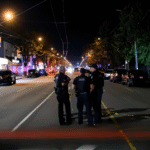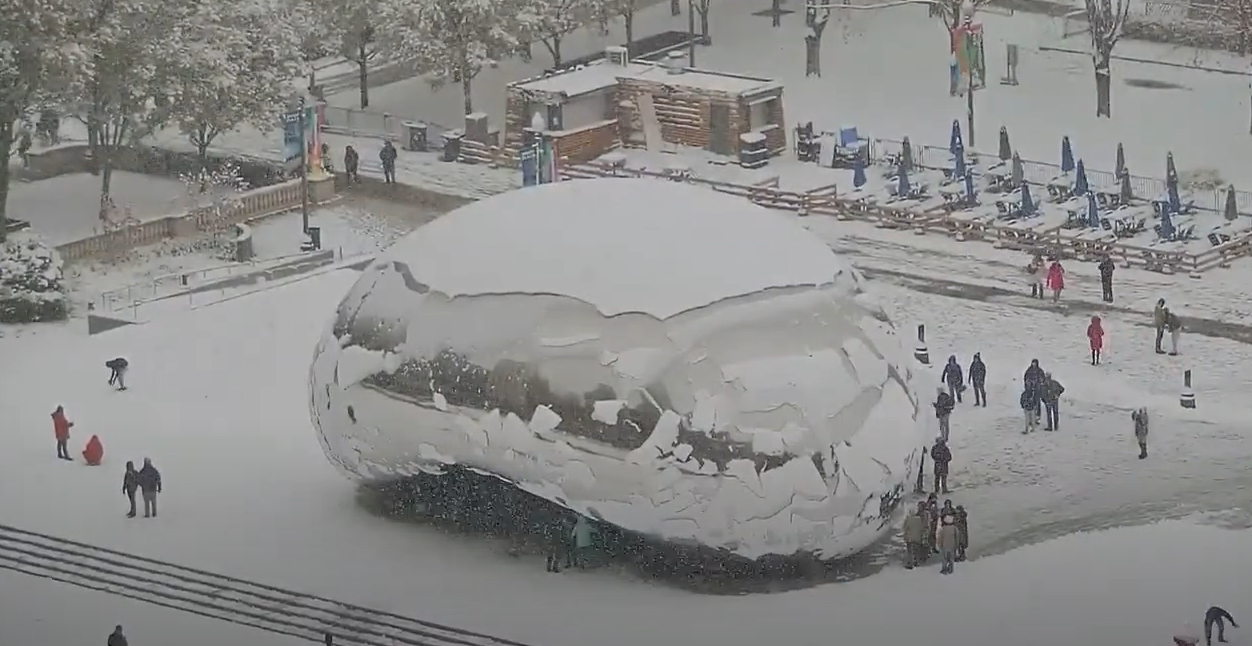Chicago, known for its iconic skyline, rich culture, and diverse population, is also known for its unpredictable weather. From hot summers to frigid winters, the city experiences a wide range of temperatures and weather patterns throughout the year. In this article, we’ll take a deep dive into Chicago’s weather, exploring its climate, seasonal trends, and what you can expect when visiting or living in this vibrant city.
Chicago’s Climate Overview
Chicago has a continental climate, characterized by cold winters, warm summers, and a transitional spring and fall. The city’s location near Lake Michigan influences the weather, often creating fluctuations in temperature, humidity, and precipitation. This variability is what makes Chicago weather so unique and sometimes unpredictable.
Key Climate Features:
- Cold Winters: Winter temperatures can plummet well below freezing, often accompanied by snowstorms and icy conditions.
- Hot Summers: Summer temperatures typically range from mild to hot, with occasional heat waves pushing the mercury well into the 90s (°F).
- Moderate Spring and Fall: Spring and fall serve as transitional seasons, with mild temperatures and frequent rainfall.
What to Expect in Each Season
Winter Weather in Chicago (December to February)
Chicago winters are notorious for their cold temperatures and heavy snowfalls. The average temperature in winter hovers between 20°F to 30°F (-6°C to -1°C), with frequent cold snaps that can drop below 0°F (-18°C). Lake Michigan plays a key role in winter weather, contributing to lake-effect snow, which can accumulate quickly.
Snow is common, with Chicago receiving about 36 inches of snow on average each winter. The wind chill, caused by strong winds blowing off the lake, often makes it feel even colder. The city is also known for experiencing blizzards, where heavy snow, strong winds, and poor visibility make travel difficult.
Spring Weather in Chicago (March to May)
Spring in Chicago can be unpredictable, with temperatures fluctuating between 40°F and 60°F (4°C to 15°C). Early spring can feel more like winter, with cold spells and occasional snowstorms. By late April and May, however, temperatures begin to warm up, and the city starts to experience more consistent mild weather.
Rain is common in the spring, with March and April being the wettest months. Thunderstorms are frequent, sometimes bringing heavy downpours, hail, and even tornadoes in extreme cases. The season is a beautiful time to visit Chicago as the city’s parks and gardens begin to bloom, and outdoor events start to pick up.
Summer Weather in Chicago (June to August)
Summer in Chicago is typically warm and humid, with average temperatures ranging from 70°F to 85°F (21°C to 29°C). However, heatwaves are not uncommon, and temperatures can soar well into the 90s (°F), especially during July and August. The high humidity can make it feel even hotter.
Despite the heat, summer in Chicago is an exciting time, with outdoor festivals, concerts, and events happening throughout the city. Chicagoans flock to the city’s beaches along Lake Michigan to cool off. Rain is also frequent during the summer, particularly in the form of afternoon thunderstorms.
Fall Weather in Chicago (September to November)
Fall is one of the most pleasant seasons in Chicago, with temperatures ranging from 50°F to 70°F (10°C to 21°C). The humidity from summer dissipates, and the cooler, crisp air makes it a great time to explore the city. The fall foliage is a highlight, especially in parks like Lincoln Park and Grant Park, where vibrant fall colors provide a stunning backdrop.
Rain is less frequent than in spring and summer, but October tends to be one of the wetter months. Chicago also experiences its first frost by late November, signaling the arrival of colder winter temperatures.
Weather Extremes and Severe Weather in Chicago
Chicago is no stranger to extreme weather events, including blizzards, tornadoes, severe thunderstorms, and flooding. The city’s position in the central United States makes it prone to severe storms during the spring and summer months, while winter storms can bring significant snowfall and ice.
The wind chill in winter, combined with lake-effect snow, can make the city feel much colder than the actual temperature. On the other hand, Chicago’s proximity to Lake Michigan can sometimes create a microclimate effect, where temperatures near the lakefront are cooler than those further inland.
Best Time to Visit Chicago Based on Weather
- Best Time for Mild Weather: Late spring (May) and early fall (September to October) are considered the best times to visit Chicago. During these months, the weather is mild and comfortable for sightseeing, and you can experience the city’s outdoor events.
- Summer: For those who enjoy warm weather and outdoor festivals, summer is the time to visit. However, be prepared for the humidity and potential heat waves.
- Winter: Winter in Chicago can be harsh, but it offers a unique experience, especially around the holidays when the city is beautifully decorated, and ice skating rinks pop up. If you’re a fan of winter activities and don’t mind the cold, winter can be magical.
Tips for Dealing with Chicago Weather
- Dress in Layers: Chicago weather can change quickly, so it’s important to dress in layers. This is especially true in spring and fall when temperatures can vary widely in a single day.
- Prepare for Wind: The city is known for its strong winds, especially along the lakefront. Even on a mild day, it can feel much colder with the wind chill. Bring a warm coat or jacket in winter and a windproof layer during the rest of the year.
- Carry an Umbrella: Rain is frequent in Chicago, so an umbrella or rain jacket is a must, especially during the spring and summer months.
- Check the Forecast: The weather can be unpredictable, so it’s always a good idea to check the weather forecast before heading out. Thunderstorms and sudden temperature drops are not uncommon.
Conclusion
Chicago weather is as dynamic as the city itself, offering everything from snowstorms and freezing temperatures to heatwaves and thunderstorms. Understanding what to expect each season can help you prepare for the elements and make the most of your time in this vibrant city. Whether you’re visiting in the summer for a festival or braving the cold in winter, Chicago offers unique experiences year-round.
Frequently Asked Questions (FAQ) About Chicago Weather
1. Does Chicago get a lot of snow in the winter?
Yes, Chicago receives an average of 36 inches of snow each winter. The city can experience heavy snowstorms, especially during cold fronts from the north.
2. How hot does it get in Chicago during the summer?
Summer temperatures in Chicago can reach up to 90°F or higher (32°C), with high humidity making it feel even hotter.
3. What is the best time to visit Chicago?
The best times to visit Chicago are during late spring (May) and early fall (September to October) for mild, comfortable weather. Summer is also a great time for outdoor activities but can be very hot.
4. How cold does it get in Chicago during the winter?
Winter temperatures in Chicago can drop to below freezing, often ranging from 20°F to 30°F (-6°C to -1°C). Wind chills can make it feel even colder.
5. Does Chicago experience severe weather?
Yes, Chicago is prone to severe weather, including blizzards, tornadoes, and thunderstorms. The city’s central location makes it vulnerable to weather extremes, particularly during the spring and summer months.











One thought on “Discover Chicago Weather: Ultimate Guide to Year-Round Forecast, Climate, and Seasonal Trends”